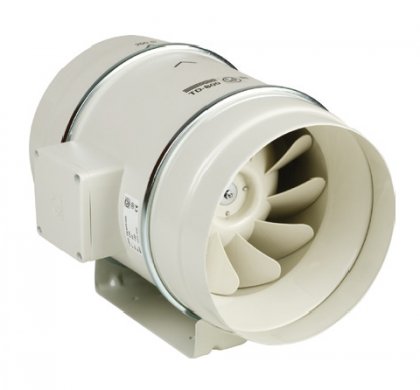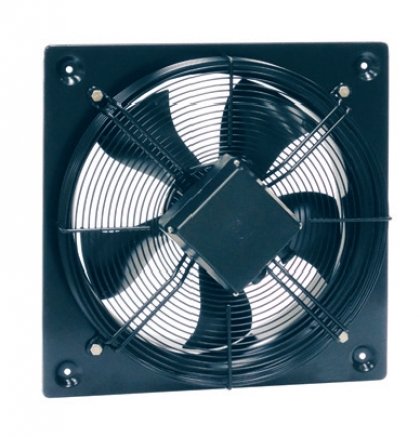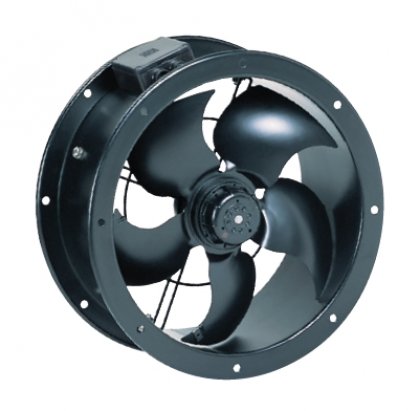In some cases, improper installation of fans can cause condensed water to flow into the fans or accumulate in the fan. Such a condition can of course compromise the function of the fan, or it can directly destroy the fan.
Bathrooms
When installing fans in bathrooms, care must be taken to ensure that fans are not installed in unauthorised zones, in shower enclosures, within reach of the bath and that the spacing requirements of the standard are adhered to. At the same time, we try to mount the fans so that condensation, which is formed when very warm air with high humidity is cooled, cannot flow over them. We know from experience that there can be litres of condensate depending on the operating conditions (example: the fan ventilates 100 m3/hour, 1m3 of air contains 45 g of water, when the air in the duct cools below the dew point temperature about 4.5 litres of water per hour is condensed). Small axial fans should be mounted with the axis horizontal, if the ventilation is only through the wall, the duct should be drained away from the fan, on the facade use PER with a drip tray. If the fan is connected to a vertical duct, a condensate drain with an odour trap must be installed at the lowest point of the duct so that condensate does not flow through the fan. The same rule applies when using ducted fans TD, RM N, RK, TDM, etc. with a plate valve. The location of the fan or plate valve should be chosen with regard to the ventilation requirement of the room, that is, on the opposite side of the room from the air inlet (the inlet location is usually the gap under the door) and not above the source of the steam outlet.
Residential spaces
The same applies to a lesser extent to residential spaces as to bathrooms, except that in kitchens and bedrooms the relative humidity does not reach the values of bathrooms.
Commercial buildings
In these cases, similar measures as in the previous cases are applied. For HCB/TCB industrial axial fans, it is recommended to consistently use the A/B impeller design as required so that the motor is always facing downwards and condensate does not accumulate in the impeller hub, as this would result in the motor and bearings being immersed in water. If necessary, open the condensate drain holes in the impeller hub. The same precautions apply to axial fans with HXT/TXT outer rotor. The air ducts connected to the fans must be very well insulated where they pass through cold areas where there is a risk of condensation (e.g. through ventilated attics, skylights, outdoor areas, etc.). In horizontal air ducts, a condensate drain must be installed at the lowest point so that it cannot flow into the fan. In vertical ducts, the condensate drain must be installed so that it cannot flow into the fan and into the rooms. In vertical risers, the condensate drain is usually installed at the lowest point of the duct and at the point below the condensate build-up (under the soil, etc.). Condensate drainage is best done with an odour trap in the rainwater outlet. Drainage into sewer lines is not recommended as the traps cannot be made to be leak-proof when dry.
Coolers, evaporators and recuperators
These are appliances that produce condensate during operation. These devices are fitted with condensate drainage outlets which connect them via odour traps, preferably to rainwater outlets. Drainage into sewer lines cannot be recommended because the traps cannot be made to be leak-proof when they dry out. If such installation is necessary, the drying out of the traps must be checked. At the same time, condensate drainage connection cross-sections and sufficient water column height must be observed. Installing the trap just below the appliance may cause water to leak out of the appliance.
Design Precautions
Precautions should be taken at the professional design level of the plant to ensure that condensate does not form where it can damage fans, equipment and structures. The equipment should be designed so that condensate, wherever possible, is collected and discharged in designated areas and in a controlled manner.




